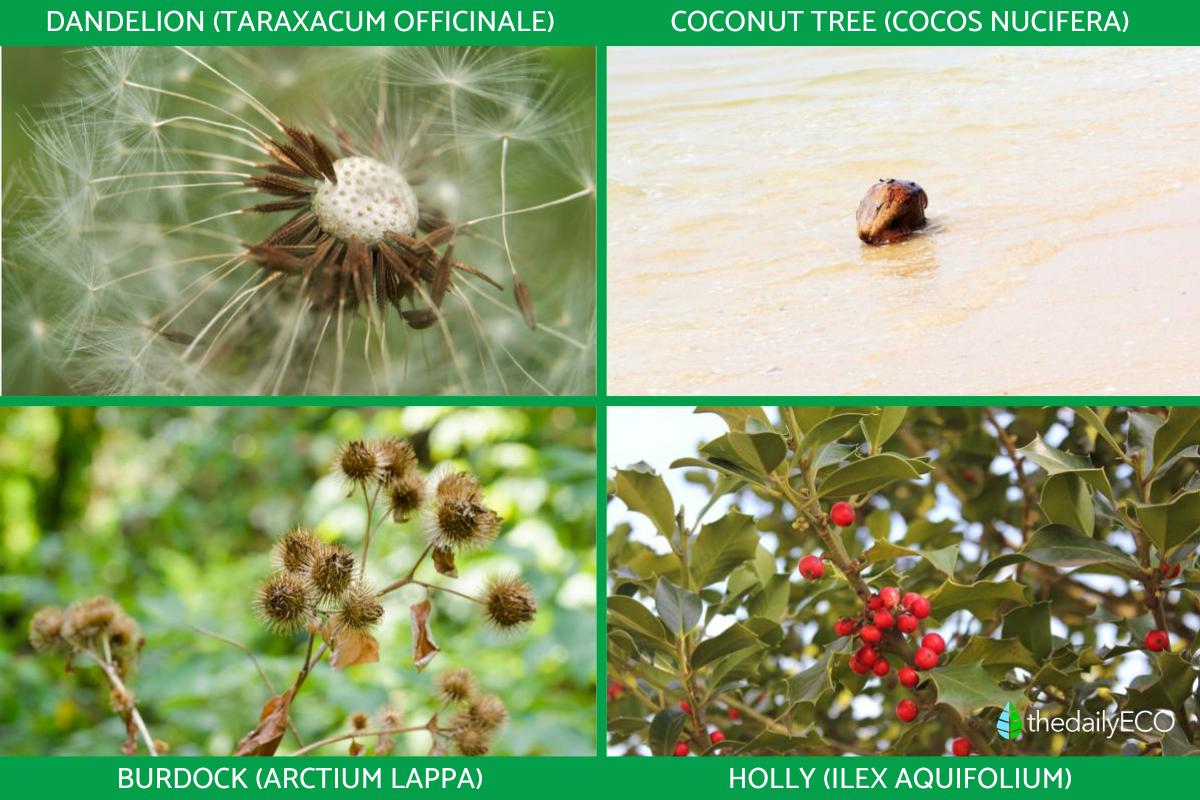How Do Plants Spread Seeds?


Seed dispersal is the process by which seeds are moved away from the parent plant. Plants can't walk around and sow their seeds in new locations, so they've evolved clever ways to hitch a ride on wind, water, animals, or even just rely on gravity. This movement not only increases individual plant survival but also promotes genetic diversity within populations, making them more adaptable to challenges.
This article from thedailyECO dives into seed dispersal and explores the five most common methods plants use to spread their seeds.
What is seed dispersal?
Seed dispersal is a fundamental process in the life cycle of plants, allowing seeds to travel away from the mother plant to find suitable places to germinate and grow. This process is crucial for the survival and propagation of plant species, as it prevents direct competition between parent plants and their offspring and promotes the colonization of new habitats.
Various seed dispersal mechanisms have evolved, each tailored to maximize the chances of successful germination and growth. Each method has its advantages and disadvantages, and many plants employ multiple strategies to ensure effective seed dispersal. This variety reflects the evolutionary adaptations that have allowed plants to thrive in diverse terrestrial environments.
Seed dispersal benefits not only plants but also ecosystems by contributing to the diversity and dynamism of plant communities. Interactions between plants and animals, such as feeding and seed dispersal, are essential for the health and sustainability of ecosystems.
Seeds come in all shapes and sizes. Discover the different types of seeds and their unique characteristics in our recommended read.

What are the 5 ways of seed dispersal?
Wind dispersal (Anemochory)
Anemochory is a method of seed dispersal where wind acts as the main transport agent. Plants that use this method have developed lightweight seeds often equipped with special structures like wings or parachutes that allow them to float in the air. This method is especially effective in open, windy areas, where seeds can travel several kilometers from the mother plant.
Water dispersal (Hydrochory)
Hydrochory refers to the dispersal of seeds through water. This method is common in plants that grow near bodies of water or in aquatic environments. The seeds of these plants are usually buoyant and can travel long distances with water currents, allowing plants to effectively colonize islands and coastal areas.
Animal dispersal (Zoochory)
Zoochory involves the dispersal of seeds with the help of animals and can be categorized further:
- Epizoochory: seeds adhere to the outside of an animal's body through hooks, spines, or sticky surfaces that latch onto fur or feathers.
- Endozoochory: seeds are ingested by animals along with the fleshy fruits that contain them. After passing through the animal's digestive system, the seeds are excreted in a different location, often surrounded by nutrients from the excrement, which facilitates germination.
Gravity dispersal (Barochory)
Barochory is the simplest method of dispersal, where seeds fall directly to the ground due to gravity. This method is common in plants with heavy seeds that are not easily transported by wind or animals. Although this method limits dispersal distance, it is effective in environments where local conditions are conducive to germination and new plant growth.
Mechanical dispersal (Autocory)
Autochory is a method in which plants have developed internal mechanisms to launch their seeds over a distance. This can occur through the explosion of ripe fruits that catapult the seeds away from the mother plant, allowing for wider dispersal and avoiding direct competition with the parent plant.
Human dispersal (Anthropochory)
In addition to natural methods, seed dispersal can also be facilitated by humans, known as anthropochory. Humans have played a significant role in the spread of plants through agriculture, horticulture, and trade. Seeds can be transported intentionally for cultivation or accidentally through vehicles, clothing, and merchandise.
Seed dispersal is amazing, but did you know some plants travel differently? Explore the fascinating world of spores in our related article.
Examples of seed dispersal
Dandelion (Taraxacum officinale)
- Wind dispersal (Anemochory): dandelion seeds are attached to parachute-like structures called pappus, which allow them to be carried by the wind over long distances. When the wind blows, the seeds detach from the plant and float in the air, potentially landing on favorable soil far from the parent plant.
Coconut tree (Cocos nucifera)
- Water dispersal (Hydrochory): coconut seeds are contained within a fibrous shell that enables them to float. These seeds can fall into the water and be carried by ocean currents over long distances, allowing the coconut tree to colonize coastal areas and islands.
Burdock (Arctium lappa)
- Animal dispersal (Zoochory): burdock seeds have spiny structures with small hooks that easily adhere to the fur of animals. When animals brush past the plant, the seeds become attached and are transported to new locations. Eventually, the seeds break off and fall into the soil, where they can germinate.
Holly (Ilex aquifolium)
- Animal dispersal (Zoochory): holly's fleshy, red fruits are attractive to birds such as blackbirds and robins. The birds eat the fruits, and the seeds pass through their digestive systems. The seeds are excreted in new locations, where they can germinate.
Chestnut (Castanea sativa)
- Gravity dispersal (Barochory): chestnut seeds, known as chestnuts, are heavy and fall directly to the ground when ripe. Although this method limits dispersal to the vicinity of the parent plant, it can be effective in dense forests where local conditions are suitable for germination. Additionally, animals such as squirrels collect and store the seeds, aiding in their dispersal.
Balsamine (Impatiens spp.)
- Mechanical dispersal (Autochory): balsamine fruits, when ripe, explode at the slightest touch, launching seeds in various directions. This method helps spread seeds away from the parent plant, reducing competition.
Corn (Zea mays)
- Human-facilitated dispersal (Anthropochory): originally from America, corn has been dispersed and cultivated globally thanks to human activity. Humans have transported corn seeds across continents, adapting their cultivation to different climatic conditions and soils, resulting in a wide variety of corn types and a global distribution of this plant.
Seeds take center stage in plant travel, but what about their ancestors? Explore the fascinating world of gymnosperms in our related article.


If you want to read similar articles to How Do Plants Spread Seeds?, we recommend you visit our Biology category.








